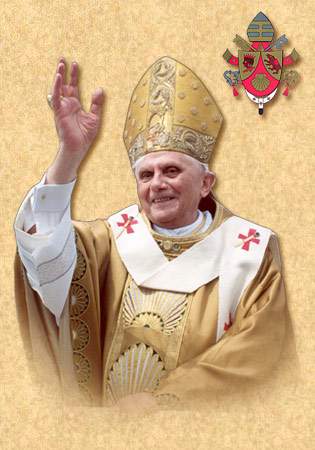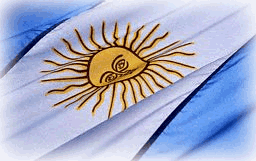Ministros extraordinarios de la Sagrada Comunión
Parte de la Homilía en el Jueves Santo 2009
+Buti Tlhagale
Arzobispo de Johannesburgo
Presidente de la Southern African Catholic Bishops' Conference SACB---
+Buti Tlhagale
Arzobispo de Johannesburgo
Presidente de la Southern African Catholic Bishops' Conference SACB---
†
JMJ
Pax
(texto completo en inglés abajo)
- Muchos entran en la Iglesia y no hacen la señal de la Cruz con agua bendita.
- Muchos ya no hacen genuflexión, ni siquiera una reverencia que reconoce la Presencia de Cristo en el Tabernáculo.
- Los comulgatorios han sido desmantelados, por lo que ya no nos arrodillamos cuando recibimos el Cuerpo de Cristo.
- Nuestras iglesias son como un lugar de mercado antes y después de la Misa, en parte porque hemos movido el tabernáculo a un cuarto separado, o simplemente porque hemos perdido el sentido de la Presencia de lo sagrado. Hemos abandonado el silencio y una atmosfera devota en la iglesia.
- Donde sea posible, necesitamos restaurar la centralidad del Tabernáculo. Necesitamos recuperar la cultura y la práctica de la genuflexión y del silencio.
- La ley de la Iglesia nos exige que ayunemos por una hora antes de la Eucaristía. El mascar chicle durante la Misa es, simplemente, de mal gusto.
- Los gestos externos ayudan a preparar nuestra actitud espiritual interna hacia lo sagrado.
- Al poner en la Iglesia bancos sin reclinatorios, efectivamente desanimamos a los fieles a arrodillarse durante la Consagración.
- El llevar la Comunión a los enfermos deja a menudo mucho que desear. Usualmente, las Hostias Consagradas son distribuidas a los ministros laicos después de la Comunión. Y el sacerdote pregunta: ‘¿Cuántas?’. ¿Cuántas qué?. No suena como un lenguaje de personas que reconocen la Presencia del Señor.
Los ministros laicos que llevan la Comunión se detienen con frecuencia para charlar con los amigos antes de ir a ver a los enfermos. A veces van rápido de compras antes de ir a los enfermos. No es inusual para algunos quedarse con las Hostias Consagradas en casa porque no encontraron a la persona enferma o porque, a su regreso, encontraron la iglesia cerrada.
- No es inusual que los tabernáculos sean abiertos por la fuerza (o robados) y que las Hostias Consagradas queden esparcidas por el suelo. No es suficiente simplemente recoger las Hostias y ponerlas nuevamente en el Tabernáculo. Hay necesidad de un rito de purificación y de arrepentimiento.
- Es muy edificante ver al sacerdote rezando con los ministros del altar en la sacristía, antes y después de la Misa. El silencio en la sacristía también conduce a una atmósfera de oración. Tal práctica permanece en los ministros del altar largo tiempo después que se han retirado de la sacristía. Lamentablemente, algunas sacristías son como un lugar de mercado. No se reza ninguna oración.
- Sería ideal que los sacerdotes pudieran una vez más rezar mientras se revisten en la sacristía. Esta práctica reforzaría la cultura del silencio y una adecuada preparación para la Santa Misa.
- Sería igualmente ideal el restaurar para los laicos las oraciones antes de la Misa y las oraciones de acción de gracias después de la Misa. Tales ejercicios nos ayudarían a centrarnos en la Presencia Real de Cristo que ha sido recibido durante la Misa.
Como custodios de la Eucaristía, es nuestro privilegio el promover la Adoración Eucarística para que aquellos que la practiquen puedan gustar de la gracia de sanación que brota del Señor mismo.
Los jóvenes leen novelas: Wole Soyiaka, Chinua Achebe, Zeke Mphahlele, Bessy Head, Shakespeare, Jane Austin, Wallet Vilakazi, Dostoyevski, Tolstoi, etc. Ruego a los sacerdotes, a los diáconos y a los catequistas que introduzcan a los jóvenes en los escritos de Juan Pablo, de Pío XII y de Benedicto XVI sobre la Eucaristía y sobre la Adoración Eucarística.
Además, deseamos proponer que la Adoración Eucarística sea adoptada en cada comunidad parroquial donde tal práctica no existe hasta el momento.
- También recomendamos que éste sea el tema de la Arquidiócesis para los próximos tres años, en orden a que emerja un movimiento eucarístico. Consideramos que la Adoración Eucarística fortalece y profundiza los temas que han sido tratados por el Sínodo Diocesano.
Parte de la Homilía en el Jueves Santo 2009
+Buti Tlhagale
Arzobispo de Johannesburgo
Presidente de la Southern African Catholic Bishops' Conference SACBC
+Buti Tlhagale
Arzobispo de Johannesburgo
Presidente de la Southern African Catholic Bishops' Conference SACBC
- Recomendamos fuertemente el retorno a las procesiones de Corpus Christi, en orden a dar un testimonio público de nuestra fe.
| Homily of Bishop Buti Tlhagale on Holy Thursday |
| Written by Archbishop Buti Tlhagale |
| Thursday, 09 April 2009 00:00 |
| Pope John Paul declared the year 2005, the Year of the Eucharist. At the conclusion of that year, he canonized five saints distinguished for their Eucharistic piety (S.C. No. 4). He also issued the Apostolic Letter Mane Nobiscum Domine and an Encyclical on The Mystery and Worship of The Holy EucharistThe Sacrament of Charity (Sacramentum Caritatis). The Congregation of Divine Worship issued an Instruction on The Sacrament of Redemption (2004). These valuable documents address the mystery of the Eucharist, and are closely related to the Priesthood. (2005). Pope Benedict continued on the same theme with his Post-Synodal Apostolic Exhortation, The Year of the Eucharist has come and gone, and yet (as a diocese) we can hardly boast of a good grasp of these documents and the teaching they contain. My strong plea to the priests: put these documents within the reach of your parishioners. Help us translate them into vernacular languages where necessary. This is one way of reawakening and increasing Eucharistic faith. This is the supreme treasure of the Catholic Church. While the Eucharist and Eucharistic Adoration have not emerged as a major theme at our Diocesan Synod, it is no doubt the basis, the foundation, the cornerstone of the themes adopted by the Synod. Turning our attention to the Eucharist and Eucharistic Adoration can only enhance and deepen the themes adopted by the Synod. The Eucharist is the source and summit of all that the Church is and does. The breaking of the bread has always been at the centre of the life of the Church (Mane, 3). The Eucharist holds within itself the whole spiritual treasure of the Church (P.A. No. 5). Through the ministry of the priest, Christ entrusted to us a memorial of His own passion and resurrection. The memorial makes effectively present here and now an event in the past, the death and resurrection, of Jesus Christ. The power of these events touches, and transforms us. In Baptism and in the Eucharist we enter into a communion of life and mission with the crucified and risen Lord. We take upon ourselves His mission to transform both our lives and the lives of others. The Eucharist is the most precious gift, the pearl of great price given to the Church by the Lord Himself. After receiving both the Body and Blood of Christ, we say “Amen”, affirming the real presence of the Body and Blood of Christ Himself. His invisible presence is made visible through the visible signs of bread and wine. The Eucharist gives Catholics their unique identity. The non-celebration of the Eucharist because of the shortage of priests weakens this Catholic identity. When there are serious and deep divisions and conflicts in our ranks as priests and in our parishes, then we contradict the spirit of the Eucharist which is “a sacrament of love, a sign of unity and a bond of charity” (S.C. No: 47). One of the chief duties of a priest is to be a faithful disperser of the mysteries of God. To him it is given to lead his people to faith and conversion. “How are they to believe in him they have not heard? How are they to hear if no one preaches and how are men to preach unless they be sent?” (Rm.10.14) (S.C. No. 8,19). The priest and the deacon have a close relationship with the Eucharist. The Eucharist, says John Paul, “is the principal and central raison d’etre of the Sacrament of the Priesthood. Priests derive from the Eucharist and exist for the Eucharist” (Ecclesia de Eucharistia, No. 2). Priests are in a special way responsible for the Eucharist. They are entrusted with the Eucharist for others. The people of God expect from priests a particular veneration and Eucharistic piety. Now, Eucharistic Adoration “is simply the natural consequence of the Eucharistic Celebration, which is itself the Church’s supreme act of adoration” (S. Caritatis No. 66). Adoration, outside Mass “prolongs and intensifies’ all that takes place during the Eucharistic Celebration. Adoration itself is an act of witnessing when one sees many gathered in silence before the Lord. Eucharistic Adoration should become part and parcel of our way of being Church. Many have said that Eucharistic Adoration promotes vocations to the priesthood and to religious life. Children, youth and adults should be taught and encouraged to appreciate the beauty of silence in the presence of Jesus Christ. Our attitude, external behaviour, our gestures, our bodily movements reveal our faith, or, our lack of faith in the invisible presence of God, in the “real presence” of Christ in the Eucharist, in the Consecrated Hosts in the tabernacle.
Young people read novels: Wole Soyiaka, Chinua Achebe, Zeke Mphahlele, Bessy Head, Shakespeare, Jane Austin, Wallet Vilakazi, Dostoyevski, Tolstoi, etc., I plead with the priests, deacons and catechists to introduce young people to John Paul’s, Pius XII’s and Benedict XVI’s writings on the Eucharist and on Eucharistic Adoration. We therefore wish to propose Eucharistic Adoration to be enacted in every parish community where such a practice does not yet exist.
Lord, help us believe. Holy Thursday 2009, Johannesburg +Buti Tlhagale Archbishop of Johannesburg President of the SACBC |

